It’s time for another simple tip! I’m a sucker for a short cut. Even when it’s something that...
Larilyn’s Tip of the Week: Night Light Setting
| We as a society tend to be big on trends – something that one person or a few people like and enjoy then starts popping up everywhere. Sometimes it’s something small, such as trends in names people pick for their kids. |
 |
| Sometimes it’s trends in fashion – which are very cyclical by the way…..vintage always comes back in style. Can we say jump suits anyone? |
 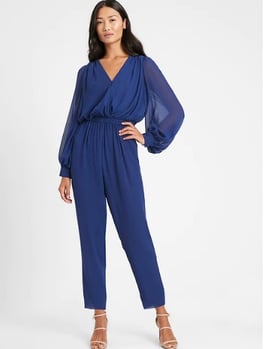 |
| Sometimes we see trends in technology. Although keeping up with technology trends is tricky in a very accelerating technological world (and expensive!). |
 |
| And then there are health trends. Remember when everyone was convinced that eating eggs was bad for you? And then good for you? And then bad for you? I’m pretty sure eggs are good for you again. |
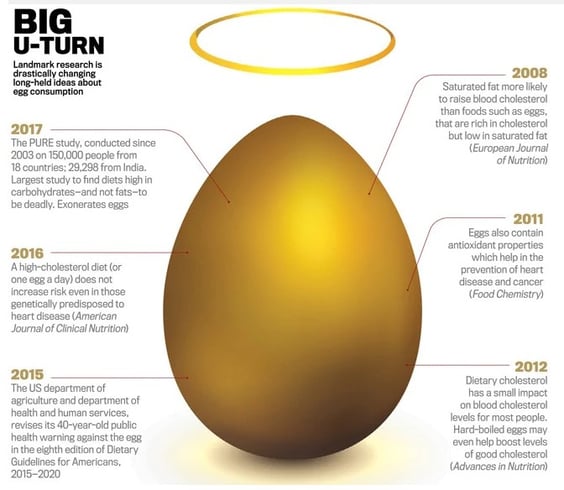 |
| One health trend I’ve been seeing pop up more and more on my radar is the effect of blue light on your eye health. I’m not going to get into the science of what blue light is by definition – that’s what Google is for. |
 |
| What I will get into is two things. First, blue light is a positive thing because it helps our bodies to recognize day and night, which is part of our bodies natural ability to regulate things like melatonin. But second, blue light is damaging to your eyes. Your eyes can block out UV light really well, but they can’t block blue light. Extended exposure to blue light will cause greater strain on your eyes and can increase the risk of macular degeneration. And the reason that this is concerning nowadays is because blue light is EVERYWHERE. Your phone screen. Your computer monitor. Basically any kind of screen. Florescent light bulbs. LED lights. The list goes on. So what can we do about this? We can’t just stop using electronics and lights. There are a few things that you can do though that can help. One thing is that when you are purchasing electronics, see if there is an option for either a built in blue light filter or some sort of screen protector you can purchase and apply that has blue light protection. |
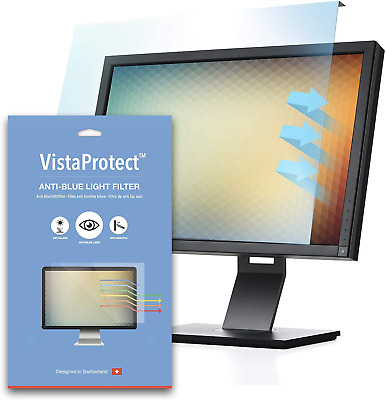 |
| Another option that I’ve been seeing is that you can get blue light blocking glasses. Just like reading or prescription glasses, but with no corrective lenses. Just the blue light protection (though, for those of us who wear prescription glasses, you can usually add a blue light protective coating to your prescription – ask your doctor about it). |
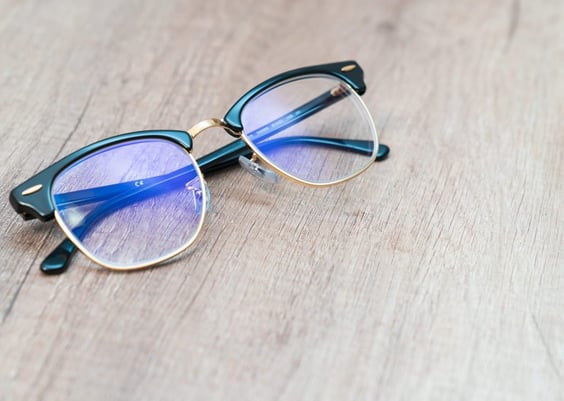 |
| One final thing you can do is to adjust the settings on your computer. Windows 10 has a setting that is called the Night Light setting. It really seems to be aimed more at the helping-you-sleep-at-night-even-though-you-were-working-late-staring-a-screen-that-throws-your-body-balance-out-of-whack angle, but I think it’s still something that’s worth knowing. If you go into your computers System (right click on the Start menu and click on System) and then click on Display, you will see Night Light. |
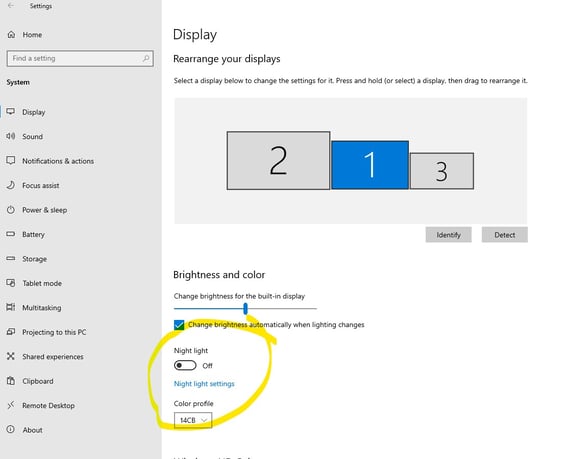 |
| You can easily toggle it off and on if you would like to do it that way. You can also click on the Night light settings beneath the toggle button and schedule times when you want it on or off (there’s a default schedule of sunset to sunrise, but you can also set specific hours), and adjust the strength of the night light. |
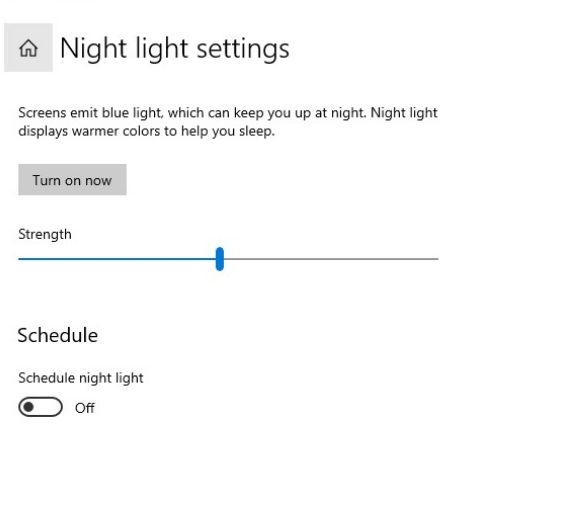 |
| Just a word of warning to anyone who works with colors a lot – when the night light settings are activated, the colors on your screen will appear warmer than they really are. So colors will print or appear on another screen as a different shade than what you see. So maybe toggle off the setting really quick before sending out invitations to Aunt Mildred’s 100th birthday party – don’t want people thinking that Aunt Mildred is sickly. |
